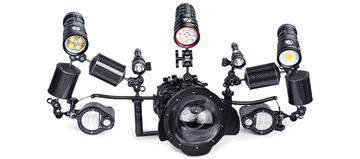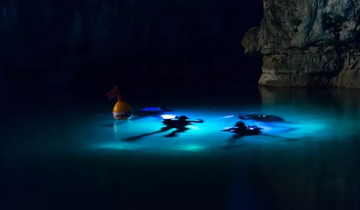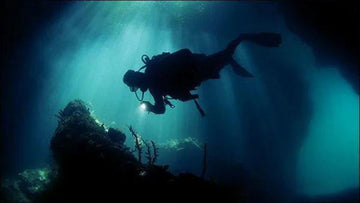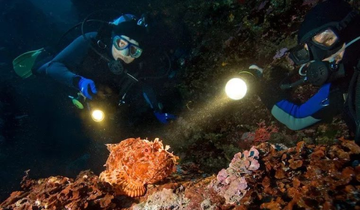How to Maintain O-Rings
All letonpower lights are protected by double o-rings some products will be protected by triple o-rings, the product is received with the o-rings already fitted. We will also include an extra set in each new lamp package when a replacement is required.
The following are methods of inspection and maintenance of O-rings:
Check the o-ring - use your fingers to avoid tearing the o-ring.
- Remove the O-ring and check for cracks/deformations/wear or cut marks (especially on the sealing surface). If ageing (hardening, brittleness) or loss of elasticity is found, it needs to be replaced immediately.
- Check the O-ring grooves for residual sand, salt scale or impurities, which can damage the seal.
Clean O-rings and grooves.
-
Wipe the O-rings and grooves with a soft cloth or cotton swab dipped in a small amount of water or neutral soapy water.
-
Stubborn salt stains can be soaked in diluted white vinegar and brushed gently.
-
Rinse thoroughly and air dry (avoid exposure to the sun).
Contraindication: Alcohol, solvents or sharp tools are prohibited for cleaning to avoid corrosion or scratches.
Apply lubricant and install O-rings correctly
Use silicone based grease (e.g. Trident, O-ring specific silicone grease), avoid petroleum based products (corrodes rubber). Apply a small amount of grease evenly to the O-ring surface, ensuring full coverage but not excessive
Correct installation:
-
Fully embed the O-ring into the groove, ensuring no twisting, folding or misalignment.
-
Manually rotate the O-ring one turn after installation to check if it is flat.
Regularly test the waterproofness, the replacement cycle suggests replacing the O-ring every 1-2 years. For long-term storage disassemble the O-ring and store it in a cool place to avoid bending and deformation and keep the groove dry.
How to maintain the batteries of diving lights
Precautions for daily use:
-
Lithium batteries: Charge promptly when discharged to 20%-30% to avoid complete depletion (will damage battery life).
-
Charging/use temperature: 5°C~45°C, avoid high temperature (e.g. sun exposure) or low temperature (charging below 0°C will damage the battery)
Cleaning and Storage
-
Regularly wipe the metal contacts of the battery and lamp body with an anhydrous alcohol swab to prevent oxidation leading to poor contact.
-
When not in use for a long time, charge the battery to 50%-60% (the ideal storage capacity for lithium batteries).
-
Store in a cool, dry place (such as a moisture-proof box), away from metal objects (to prevent short-circuiting).
Recommended Replacement Cycle: Lithium batteries have a typical lifespan of 300-500 cycles (to be replaced when the performance is significantly degraded).
Battery check before and after diving
-
Verify that the battery is fully charged, the contacts are clean and free of corrosion, and the battery case is free of deep scratches or tears.
-
Check that the battery compartment is dry and seals are intact (to prevent short circuits from water ingress)
-
Rinse the light with fresh water after diving (especially important in saltwater environments) and wipe the battery compartment dry before switching it on.
Prohibited behaviour:
Dismantling or modifying batteries (lithium batteries may catch fire and explode if punctured/short-circuited).
Mix different brands and models of batteries or chargers.
If the battery swells or leaks, put it in a fireproof container, keep it away from flammable materials and contact a professional for recycling.
How to care and maintain the lamps and lanterns shell
Daily Cleaning
Post-dive cleaning (especially in saltwater environments)
-
Rinse the housing with fresh water to remove salt, sand and impurities (salt is extremely corrosive).
-
Focus on cleaning switches, battery hatch, O-ring grooves and other areas prone to dirt accumulation.
Cleaning before storage
-
Ensure that the enclosure is completely dry before storing to prevent mould growth.
-
Inspect the enclosure for cracks, scratches or impact damage.
Preventing physical damage
-
Try to use the light arm or handle to fix it when diving to minimise collision with hard objects such as reefs and wrecks.
-
Store separately to avoid friction with other equipment (e.g. regulator, lead).
Storage recommendations
-
Dry environment: Store in a ventilated, light-proof place (such as a moisture-proof box) to avoid humidity causing metal parts to rust.
-
Avoid pressure: Do not press heavy objects on the lamp body to prevent deformation affecting the sealing.
-
Long-term storage: Remove the battery to prevent leakage from corroding the shell.
caveat
-
If the shell is seriously damaged (e.g. cracked, deformed), it is recommended to return it to the factory for repair or replacement, and not to be repaired by glue on your own (it may damage the waterproofness).
-
Before each dive, check whether the shell and O-ring fit tightly to make sure there is no looseness.






7u6faw
7u6faw